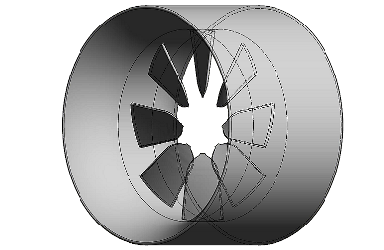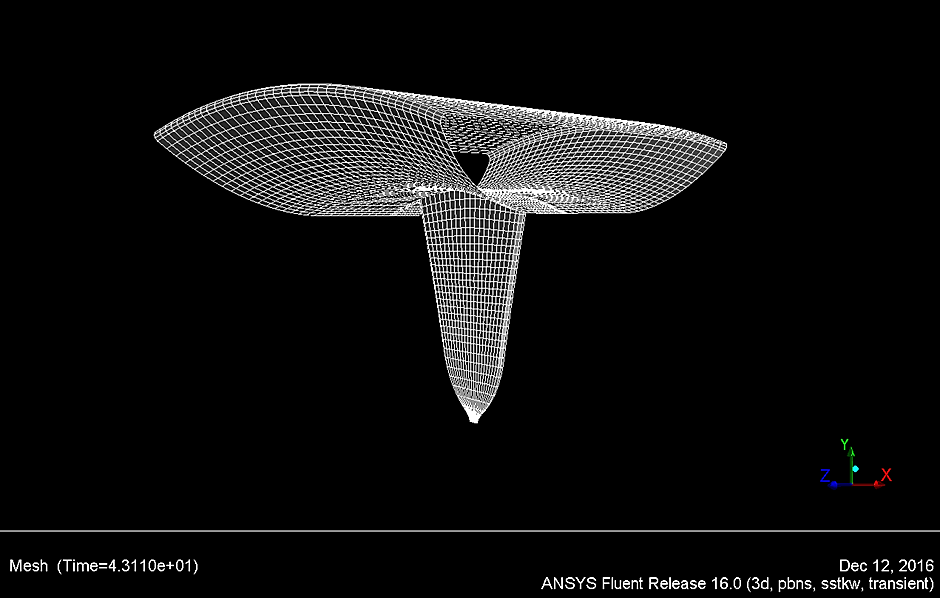CFD & FSI-RG
Computational Fluid Dynamics &
Fluid Structure Interaction
Research Group
qing.xiao@strath.ac.uk +44 (0)141 548 4779
Computational Fluid Dynamics &
Fluid Structure Interaction
Research Group
qing.xiao@strath.ac.uk +44 (0)141 548 4779
Fluid-Structure Interaction Analysis of a Multi-Bladed Open-Centred Tidal Turbine
By Mitchell Borg, Dr Qing Xiao
In consequence to the development of global warming, clean-energy generation, together with more sustainable engineering practices, are required to diminish the damage ensued to our environment. To decrease grid dependency on fossil fuels, recent practices in the offshore renewable energy industry have exploited hydropower sources in an effort to generate energy from the motion of tidal currents by means of subsea turbines.
This thesis presents a numerical analysis to investigate the fluid dynamics and structural mechanics of a subsea open-centred tidal turbine with use of the popular computational fluid dynamics (CFD) software ANSYS Fluent. Primarily, a rigid multi-bladed turbine will be modelled to establish the hydrodynamic parameters of the system, and validate the numerical model with experimentation results found in literature.


Subsequently, a flexible multi-bladed turbine will be fabricated from composite materials, where experimental analysis will be undertaken to specify its unique hydrodynamic parameters. A numerical model will then be developed to replicate and analyse the fluid-structure interaction of the non-rigid turbine by means of coupled CFD and FEA software. The numerical and experimental analyses will then be associated to establish a validated CFD-FSI model for a turbine setup. Furthermore, a full turbine farm will be set up by means of a coupled CFD-AD method, where physical actuator disk theory will be applied within the model to establish the turbulent parameters of the hydrodynamic flow along the farm. By this means, an appropriate turbine configuration may be deduced.
Copyright © 2014 - All Rights Reserved - University of Strathclyde CFD & FSI-RG